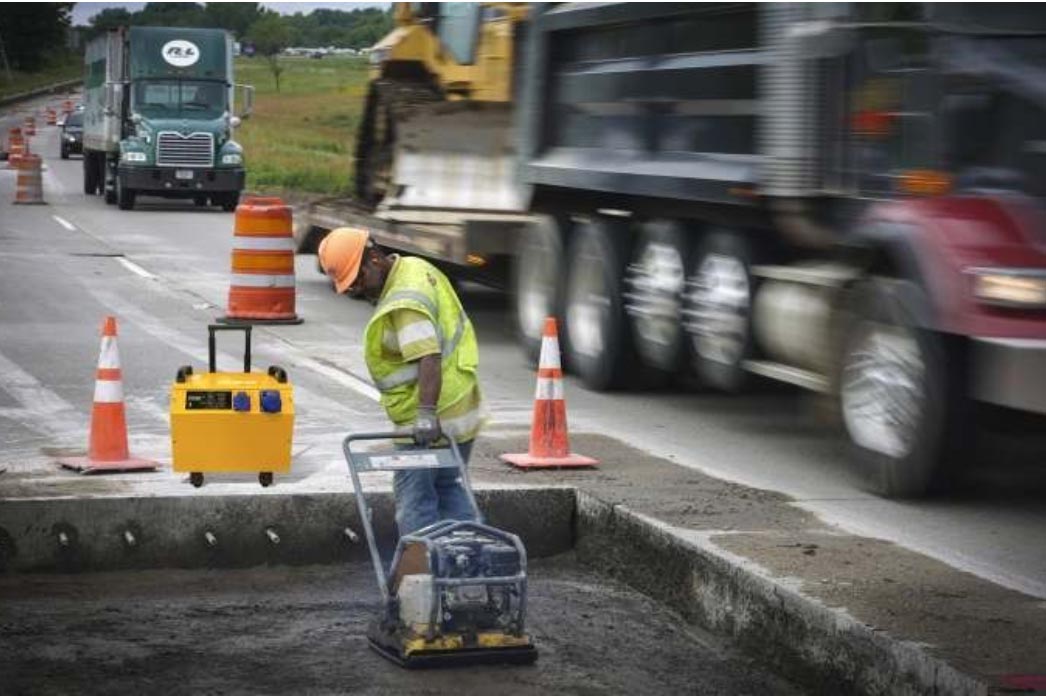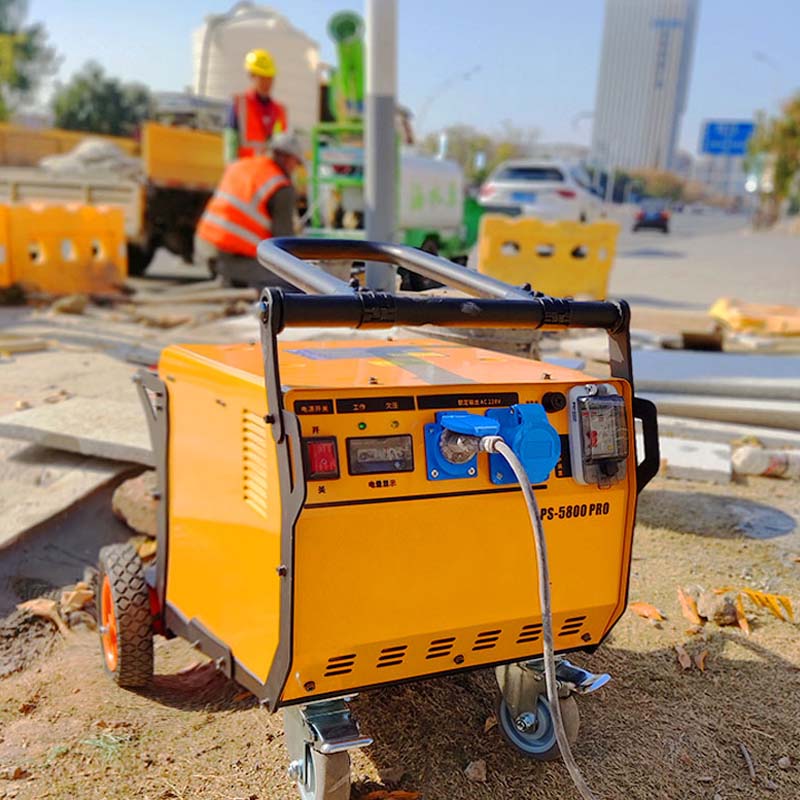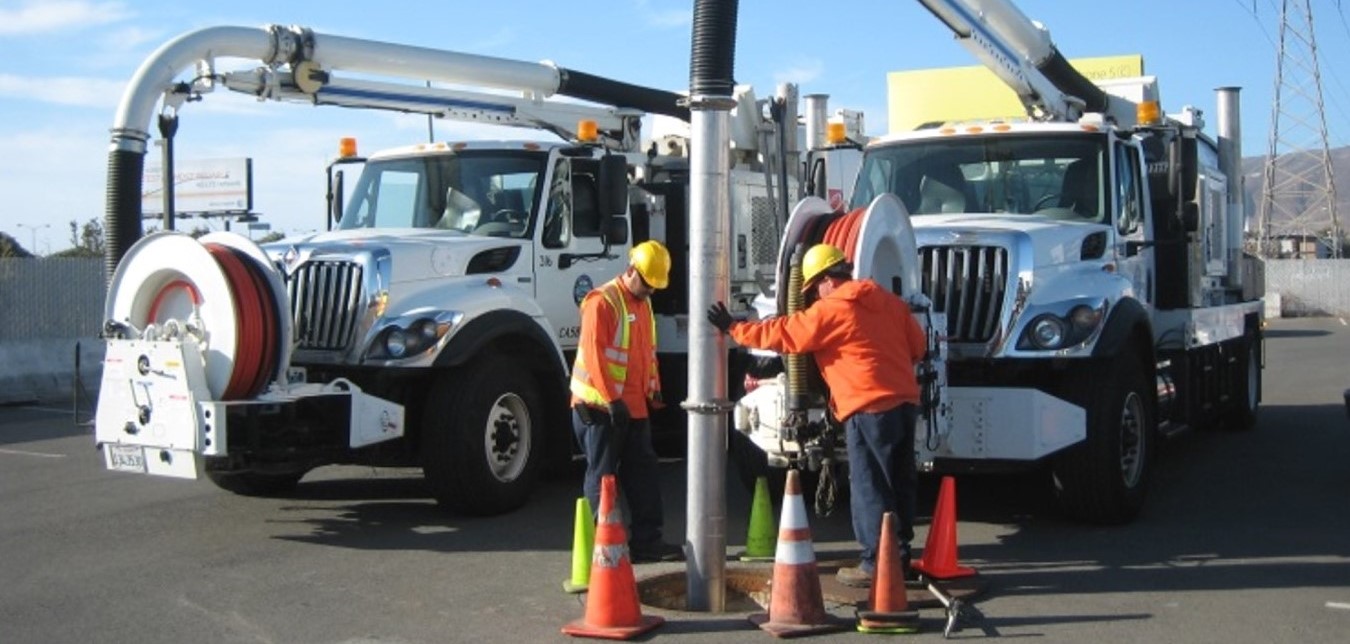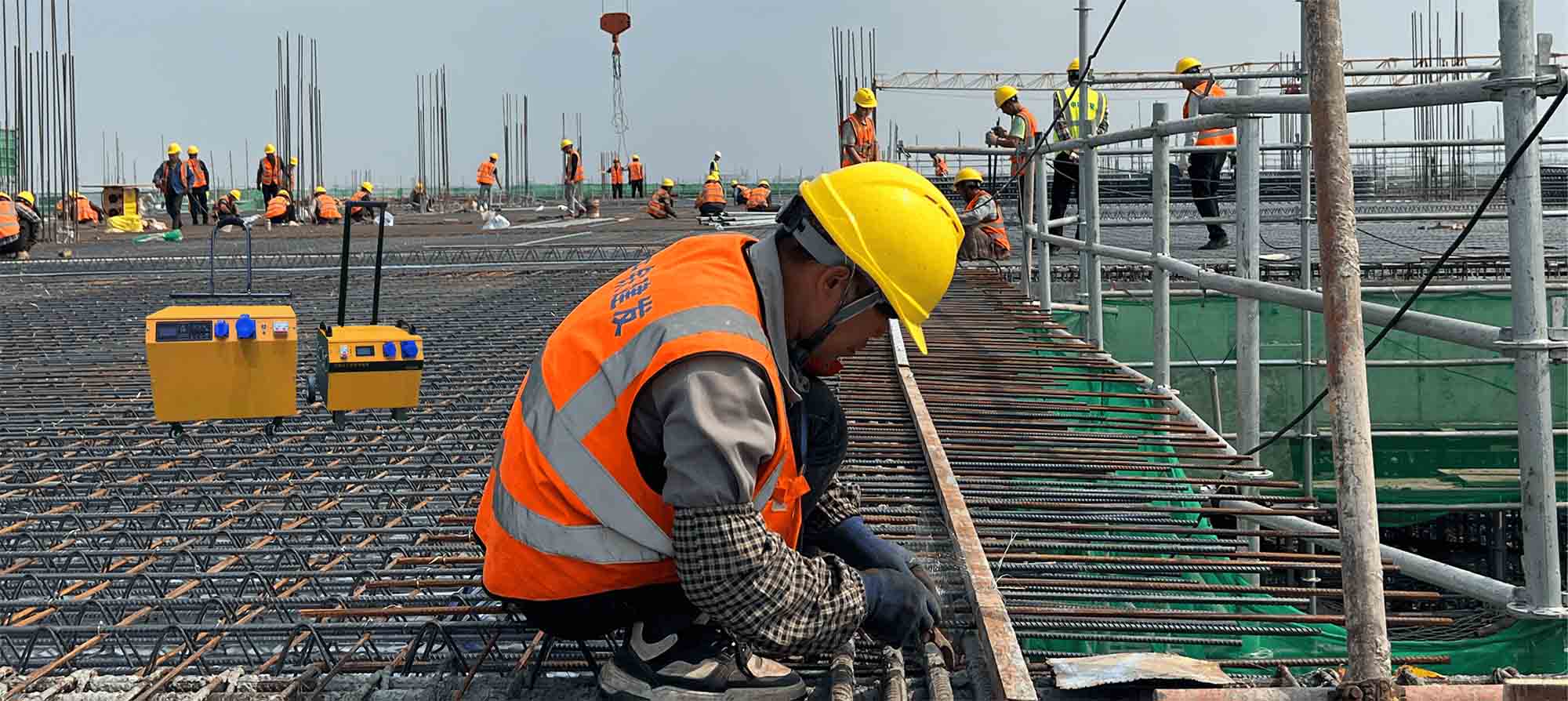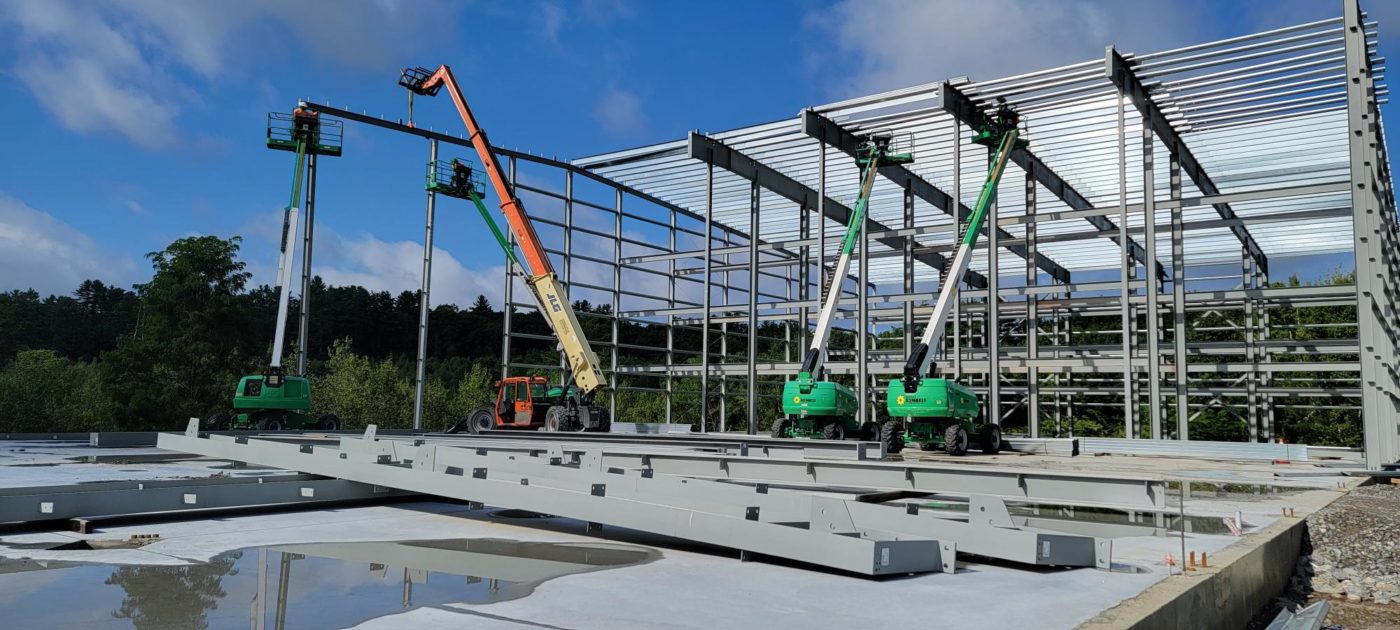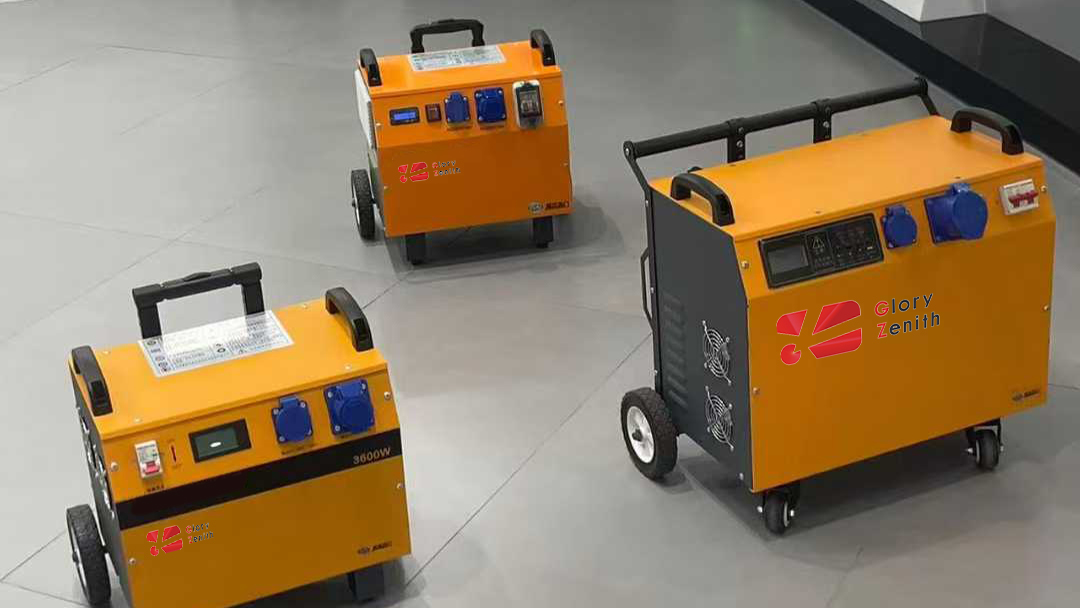Jul 18, 2025
Imagine a construction manager loses power at a faraway site. He needs backup power to keep work going. Many businesses use a portable power station for help. These are easy to move and have many ways to charge. They also have good safety features. Companies like them because they give power in emergencies. They help with work away from the main power grid. They also help companies meet green goals. But businesses should look at both the good and bad sides before choosing.
Key Takeaways
Industrial portable power stations give steady, clean, and quiet power. They are helpful for many business jobs. They work well in faraway places or during emergencies.
These stations are flexible and have different power levels. They are easy to move. They have many ways to charge and simple controls.
Using portable power stations can help businesses save money over time. They use less fuel and need less care. They also cost less to set up than regular generators.
Businesses should think about their power needs and total costs. They should check if their devices work with the station before buying. This helps them pick the best one.
Doing regular care, using the station the right way, and training workers can make the 5000W portable power station last longer. This also helps stop common problems.
Benefits of Portable Power Station
Image Source: unsplash
Reliability
3000W portable power station give steady energy for important jobs. They use lithium-ion and LFP batteries, which last a long time. These batteries can work for over 5,000 cycles. This means they give power for many years. Many models have smart safety features. These features stop overcurrent and short circuits. This helps protect equipment from damage. The strong cases keep out dust, water, and bad weather. Construction workers, welders, and emergency teams use these stations. They help keep tools and machines working in tough places.
Note: Portable power stations do not use fuel, so there is less risk of fire or explosion. This makes them safer for industrial sites.
Flexibility
A portable power station is very flexible for many users. Companies can pick power levels from 60 kW to 360 kW. This makes them good for many jobs, like charging at depots or public places. The design has strong cases, wheels, and handles. This makes it easy to move them around.
Works with single-phase (220V AC) and three-phase AC (220V, 380V, 480V)
Can use many connector types: CCS1, CCS2, CHAdeMO, GB/T, and NACS
Easy to upgrade as business needs change
Simple controls with touchscreens, LED lights, and payment systems
Can be set up on a wall or a stand
Aspect
Details
Voltage Support
Works with single-phase (220V AC) and three-phase AC (220V, 380V, 480V)
Mobility
Small and light, easy to carry, fits in car trunks
Charging Options
Works with many standards: CCS1, CCS2, CHAdeMO, GB/T, and NACS
Design
Easy to upgrade and fix
Power Output
Power can be set from 60 kW to 360 kW
User Interface
Easy to use, with cable holders and payment systems
Portable power stations can work off-grid. They give AC, DC, and USB power. This means they can run welding machines and radios. They are quiet and do not make smoke, so they are good for indoor or quiet places.
Safety
Safety is very important for industrial users. Portable power stations use batteries, not fuel. This lowers the chance of fire or explosion. Many have cases that keep out water and dust. This protects the inside parts from rough places like construction or mining.
Smart safety features stop overcurrent, short circuits, and voltage spikes.
Certifications like UL, CE, IEC, and UN show they meet safety rules.
LCD screens let users check battery and system health in real time.
These things make portable power stations a safe choice for sensitive equipment and backup power.
Cost Savings
Using a portable power station can save businesses a lot of money. A permanent generator system with ATS can cost up to $57,000. This price includes setup and equipment. A portable generator with MTS may cost about $16,000. This saves about 72% at the start. Businesses also save on yearly upkeep, fuel, and testing. Many rentals include these services in the fee.
Cost Component
Permanent Generator with ATS
Portable Generator with MTS (Rental)
Equipment Purchase Cost
$25,000
N/A (rental)
Installation Cost
$25,000
$10,000
Automatic Transfer Switch (ATS)
$7,000
N/A
Manual Transfer Switch (MTS)
N/A
$6,000
Total Installed Cost
About $57,000
About $16,000
Annual Maintenance & Testing
Over $10,000
Included in rental fees
Rental Fees (weekly)
N/A
$700 to $1,400
Upfront Cost Savings
N/A
About 28% of permanent system cost
Tip: If a business can handle short power outages, a portable power station is often cheaper and more flexible than a permanent generator.
Portable power stations also lower costs by using solar panels and not needing fuel. They do not make emissions, so they help companies reach green goals and cut their carbon footprint.
Drawbacks and Limitations
Upfront Cost
Industrial portable power stations usually cost more at first than regular generators. Bigger batteries and more power make the price go up. A basic generator can cost less than $500. A portable power station with the same power can cost from $200 to $2,000. The table below shows how they compare:
Power Source
Typical Upfront Cost Range
Ongoing Costs
Portable Power Station
$200 - $2,000
Minimal, mainly occasional battery replacement
Traditional Generator
Under $500 (basic models)
Fuel, oil, filters, and regular maintenance
Businesses can pay less at first by using tax credits, grants, or special loans. Some companies use programs like Section 179D Tax Deduction, Advanced Energy Project Credit, and REAP. These programs help lower the total cost, especially for energy-saving or rural businesses.
If a business uses grants, tax credits, and low-interest loans, it can save more than half the cost. Talking to renewable energy experts helps companies find the best deals.
Maintenance
Portable power stations need less care than fuel generators. They have fewer parts and do not need oil changes or new filters. Most care is about keeping the unit clean, checking wires, and charging it right. Here are the main steps:
Wipe dust and dirt off the outside and vents.
Check and tighten all wires and plugs.
Keep the unit in a cool, dry place.
Use the charger that came with it and do not overcharge.
Charge and use the battery every few months if not used.
Keep it dry and handle it gently.
Update the software when needed.
The table below shows how much care and money each type needs:
Aspect
Fuel Generator
Industrial Portable Power Station
Key Point
Maintenance Interval
Frequent, includes oil and filter changes
Minimal, mostly cleaning and updates
Portable power stations need less frequent care
Maintenance Cost (5y)
About $2,500
About $250
90% lower cost for portable power stations
Complexity
Many moving parts, complex servicing
Few parts, simple maintenance
Higher reliability, less downtime
Cleaning and storing the power station right helps it last longer. Following the maker’s rules keeps it working well for years.
Capacity
Capacity is one main limit for portable power stations. Each one holds a set amount of energy, called watt-hours (Wh). This limits how long and what it can power. The table below shows common sizes and what they can run:
Capacity Range (Wh)
Typical Devices Powered
Suitability for Business Sizes and Use Cases
100-500
Small electronics (phones, tablets, laptops)
Small businesses, short-term needs
500-1500
Appliances (refrigerators, microwaves, TVs)
Small to medium businesses, emergency power
1500-3000
Power tools, sump pumps, mini split AC units
Medium to large businesses, short-term outages
3000+
Heavy-duty appliances (ACs, washers, ranges)
Large businesses, off-grid or long-term backup
Businesses should list all devices they want to power and check both running and surge watts. Portable power stations are good for short or backup use, but may not work for long, heavy jobs.
Inverter generators can run as long as they have fuel, so they are better for big, long jobs.
Portable power stations are quiet and do not make smoke, but how long they last depends on battery size and charging time.
Power banks hold even less power and are only for small electronics.
Portable power stations are best for businesses that need clean, quiet, and easy-to-move power for short times. Companies that need lots of power for a long time may need to use other options or regular generators.
Decision Factors
Power Needs
Businesses need to know how much power they use. They should check what devices and tools need power. The right portable power station depends on these needs. Here are some steps to help:
Make a list of all devices and tools you will use.
Find out how much power each device uses when running and starting up. The power station must handle the biggest surge.
Add up the power needed for all devices. This shows the smallest output you need.
Check what kinds of ports you need, like AC, DC, USB, or USB-C.
Think about how long each device will run. This helps you know how much energy you need in watt-hours.
Look for features like easy carrying, solar charging, battery care, and screens.
Compare different models by looking at their features, price, warranty, and reviews.
Industrial jobs often need a lot of power all the time and at startup. For example, a portable air conditioner may need 3000 watts to run but 4500 watts to start. The power station must handle both numbers. The number and type of ports matter for using different tools.
Total Cost
Knowing the total cost helps businesses pick the best option. A portable power station may cost more at first than a simple generator. But it usually costs less to keep running. Businesses should think about:
The price to buy or rent
Fees for setting up and installing
Money for care and new batteries
Charging costs from electricity or solar
Warranty and help from the company
A portable power station saves money over time. It does not need fuel, oil changes, or lots of repairs. Many last for thousands of uses, so you do not need to buy new ones often. Tax credits and grants can help lower the first cost. Looking at the total cost over five years is better than just the first price.
Alternatives
Businesses should look at other ways to get power. Some choices are diesel-powered generators, grid upgrades, and power banks. The table below shows how they are different:
Feature
Portable Power Stations
Diesel-Powered Generators
Power Source
Rechargeable batteries, solar or grid charging
Diesel fuel
Reliability
High, fewer moving parts, no fuel needed
Moderate, depends on fuel and engine
Noise Level
Silent
Loud
Fuel Dependency
None, supports renewables
Needs constant fuel supply
Maintenance
Minimal, mostly battery care
Regular oil and engine service
Cost
Higher upfront, lower long-term
Lower upfront, higher ongoing
Flexibility
Portable, easy to set up
Heavy, less flexible
Traditional generators give more power and last longer. But they are noisy, make smoke, and need more care. Power banks are good for small things but not for big tools. Grid upgrades give steady power but cost more and cannot move. Each choice has good and bad points for cost, trust, and how easy they are to use.
Tip: If a business needs clean, quiet, and easy-to-move power for a short time, a portable power station is a good choice. If they need lots of power for a long time, they may want a generator or grid upgrade.
Industry Use Cases
Image Source: pexels
Applications
Many businesses use portable power stations to fix power problems. These stations help machines keep working when the power goes out. This saves time and money for factories. Construction workers use them at sites with no grid power. Emergency teams use them for fast backup during disasters. The table below shows how different jobs use these stations:
Industry Use Case
Problem Description
Solution Provided
Quantified Benefits and Impact
Manufacturing
Production lines stop during power outages, causing lost time and money
Portable power stations provide steady backup power to keep machines running
Uninterrupted operations, cost savings, higher ROI by cutting downtime
Remote Work
Lack of reliable power leads to slow work and missed deadlines
Portable power stations ensure constant power supply for devices
Increased productivity, flexible power supply, cost-effective compared to generators
IT Infrastructure
Power loss causes data corruption and system crashes
High-capacity power stations provide reliable backup power
Continuous IT operation, prevention of data loss, fast recharge cycles
Construction and Field Operations
Power interruptions halt tools and equipment, delaying projects
Rugged portable power stations deliver steady power in harsh conditions
Up to 30% reduction in downtime, increased productivity, cost savings over diesel generators
Emergency Response
Power outages disrupt essential services, risking lives
Portable power stations provide immediate backup power
Quick power restoration, reliable backup, ensures safety and stability during outages
On a faraway construction job, using portable power stations instead of diesel generators saved money. The team finished early. The stations also made less pollution and were easier to use for changing power needs.
Insights
Businesses have learned a lot from using portable power stations. Many say these stations help them work better and stop delays. But some people have problems like short battery life or devices that do not work with the station. The table below lists common problems and how to fix them:
Challenge
Possible Causes
Solutions
Power station not turning on
Battery drained, faulty connections
Check battery level, inspect connections
Insufficient battery life
Overuse, battery degradation
Avoid full discharges, use energy-efficient devices
Slow charging
Incorrect charger, low input power
Verify charger specs, use recommended chargers
Incompatibility with devices
Device voltage/current mismatch
Confirm device compatibility
Overheating
Poor ventilation, heavy load
Ensure proper ventilation, reduce load
Unstable connections
Loose connectors, interference
Inspect and secure connectors
Frequent overload protection
Excessive power draw
Manage power loads, avoid simultaneous high consumption
Inability to charge via solar
Incorrect voltage, insufficient sunlight, faulty panels
Match solar panel specs, optimize sun exposure, test panels and power station separately
Portability concerns
Heavy or bulky units
Choose models with ergonomic handles, wheels, modular batteries
Inaccurate display or app
Calibration issues, software glitches
Reset or update firmware, recalibrate display, reconnect app, contact support if needed
Many business users say picking the right station and doing regular care stops most problems. They also say it is smart to teach workers how to use the stations safely and check them often.
Many businesses now want backup power that is clean and reliable. Here are some important points: Lithium-ion batteries are popular because they work well and last long. Bad weather and working far from cities make people choose quiet, clean power. More people in Europe and new markets want green energy.
To pick the best option, companies should do these things: First, figure out how much power they need and when they will use it. Next, decide how much money to spend and what features matter most. Then, look at how much money they can save over time and how green the choice is.
Talking to a power expert can help companies make the best choice for the future.
FAQ
How long do industrial portable power stations last?
Most industrial portable power stations work for 5 to 10 years. Their lithium-ion batteries can be charged over 5,000 times. Taking care of the station and storing it right helps the battery last longer.
Can portable power stations run heavy equipment?
Yes, many industrial models can power big tools and machines. Users need to check how much wattage and surge their equipment needs before picking a station.
Are portable power stations safe to use indoors?
Portable power stations do not make fumes or emissions. They are quiet and safe to use inside. Users should keep them dry and away from heat.
What charging options do these stations support?
Most industrial portable power stations can charge from an AC wall, solar panels, or sometimes a vehicle. Some models let you charge them fast for quick use.
Tip: Always use the charger and cables the maker suggests to keep charging safe and efficient.
Read More
 Mail Us : service@zgsscr.com
Mail Us : service@zgsscr.com Call Us: +86 18039889808
Call Us: +86 18039889808 Mail Us : service@zgsscr.com
Mail Us : service@zgsscr.com Call Us: +86 18039889808
Call Us: +86 18039889808
